Plan checklist
Kamsack
Town of Kamsack, Assiniboine & Whitesand
Planting plan created by Assiniboine Watershed Stewardship Association
Schedule A:
Plants & Property
Land Characteristics
This planting plan is designed based on the land characteristics identified during the day of the site visit. Plants are chosen according to the soil and light conditions on your property. The number of plants chosen for each planting compartment takes into account the square metre area of the space, as well as the amount of current vegetation cover. Your property is part of ecoZone: 8a
Land Characteristics by Compartment
| Length | Width | Area | pH | Soil | Moisture | Light | Height | |
|---|---|---|---|---|---|---|---|---|
| A | 25m | 6m | 150m2 | normal | loamy, clay | normal, moist, wet | full sun, partial sun | |
| B | 16m | 3.5m | 56m2 | acidic, basic, normal | sandy, loamy, clay, humus | dry, normal, moist, wet | full sun, partial sun, shade | max 1.5m, max 2m, max 3m |
| 41m | 4.75m | 206m2 |
Plant Selection Summary
The following shrubs and trees are chosen for their suitability and survivability given the current soil and light conditions in each compartment on your property, as well as preferable features.
| Plant Species | A | B | Potted | Bareroot | Wildflower |
|---|---|---|---|---|---|
| Bebb Willow | 40 | 40 | |||
| Sandbar Willow | 20 | 20 | |||
| Eastern Cottonwood | 20 | 20 | |||
| Chokecherry | 10 | 10 | |||
| Subtotal | 40 | 50 | 0 | 90 | 0 |
| Totals | 90 | ||||
Plant Information
The following table summarizes key information about each plant selected for your property.
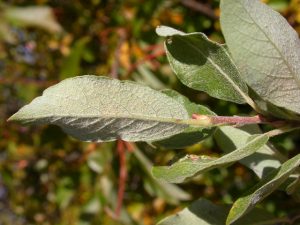
|
Bebb WillowHeight: 5 m
The Bebb Willow is a mid-sized deciduous shrub species that can grow up to 5 m in height. This plant may also be known by the common names Beaked Willow and Diamond Willow. The leaves are alternately arranged, dull green in colour, have wrinkled and hairy undersides, are narrow and elliptic in shape (but broad for willow), and have toothed margins. The bark is reddish or grayish-brown in colour and may have diamond-shaped patches along the main stems. The catkins are light green or yellow coloured and appear with the leaves between May and June. The roots can useful for controlling erosion and stabilizing shorelines.
|
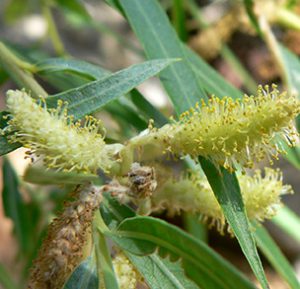
|
Sandbar WillowHeight: 1-4m
The Sandbar Willow, also referred to as Narrowleaf Willow or Coyote Willow, is a perennial shrub species located from Alaska to New Brunswick. This shrub typically grows to 1-4m.This species has a strong colonizing ability and expansive spreading root system, which make it an ideal species for shoreline stabilization. The Sandbar Willow produces a single trunk with several erect branches growing from its base. This species bark is smooth and purple-yellow in colour. Leaves produced are simple, elongate and lance-shaped, alternately arranged along the branch. This specie's leaves are two-toned with a glossy green upper surface and light to matte white underside. Throughout the summer, yellow-green catkin flowering bodies bloom, creating a favorable environment for a range of pollinator species. This species of Willow is tolerant of both drought and flooding and can quickly rebound when damaged by beavers, making it a very hardy plant species.
|
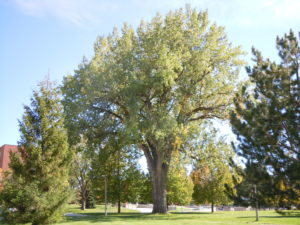
|
Eastern CottonwoodHeight: 30m
The Eastern Cottonwood is a medium to large sized deciduous tree, growing up to 30 m in height. The trunk tends to branch out in open areas, giving it a multi-stemmed trunk and a broad crown. The leaves are triangular, have a heart-shaped base with a pointed tip, and have large rounded teeth all along the margin. They are about 5-10 cm long with a leaf stalk of the same size. These protein rich leaves turn a golden yellow in the fall before falling to the ground. Male and female catkins grow on separate trees and appear before leaves emerge in April to May. The catkins are 5-7 cm long with the males having a dark red colour and the females having a green colour. Female trees produce fruit that look like green, egg-shaped capsules. In the early summer, these capsules split into 3 or 4 parts and release hundreds of tiny seeds with white hairs, appearing like cotton balls, hence the name of the species.
|
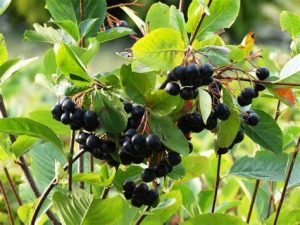
|
ChokecherryHeight: 6-9 m
The Chokecherry is a large deciduous shrub or small tree which grows between 6 and 9 m tall and is a member of the Rose family. It produces a twisted or crooked trunk as well as a narrow, oval to round crown composed of many slender branches. Leaves are alternately arranged, simple, have a deep green upper surface, and light matte green undersides with tufts of hair at the vein axils. During the fall, foliage turns a vibrant deep red to fire yellow or orange. Between May and June, small showy white flowers grow in cylindrical clusters on the terminal ends of branches. By mid-August, flowers turn into shiny deep red or black cherries, which hang in elongated clusters. The fruit is ripe by September and provides a food source for birds and small mammals. The Chokecherry is often found as pure stands forming thickets, or mixed with other early succession shrub and tree species. This fast-growing plant can quickly invade logged land, abandoned farms, and exposed shorelines. The fibrous and wide-spreading root system of this shrub make it an ideal plant for erosion control and bank stabilization. This species possesses the ability to withstand moderate flooding and drought.
|
Compartment A
Naturalization Area
Banks are sliding into the Assiniboine River after multiple years of severe flooding. Grasses and sedges have begun to reestablish. We planted 40 willows to help encourage vegetative succession and further stabilize the slopes. pH: normal
pH: normal Depth: bareroot
Depth: bareroot-
 Moisture: normal, moist, wet
Moisture: normal, moist, wet -
 Soil Type: loamy, clay
Soil Type: loamy, clay -
 Light conditions: full sun, partial sun
Light conditions: full sun, partial sun
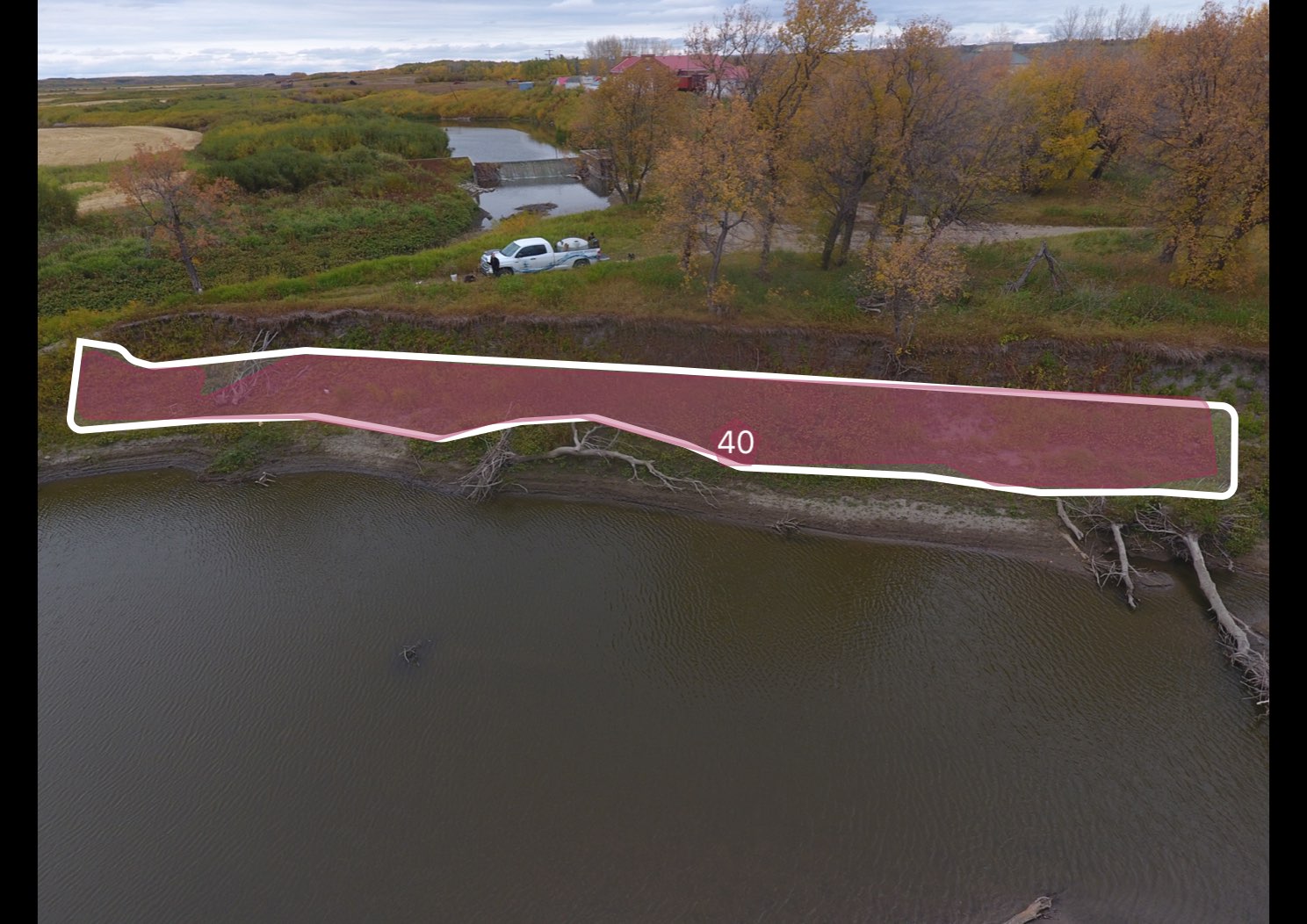
Compartment B
Naturalization Area
Banks are overhanging after being undercut by severe flooding in previous years. Grasses and sedges have begun to reestablish. We planted three species of fast-growing tree and shrub to encourage vegetative succession and prevent further bank slumping. pH: acidic, basic, normal
pH: acidic, basic, normal Depth: potted, bareroot
Depth: potted, bareroot-
 Moisture: dry, normal, moist, wet
Moisture: dry, normal, moist, wet -
 Soil Type: sandy, loamy, clay, humus
Soil Type: sandy, loamy, clay, humus  Plant Height: max 1.5m, max 2m, max 3m
Plant Height: max 1.5m, max 2m, max 3m-
 Light conditions: full sun, partial sun, shade
Light conditions: full sun, partial sun, shade
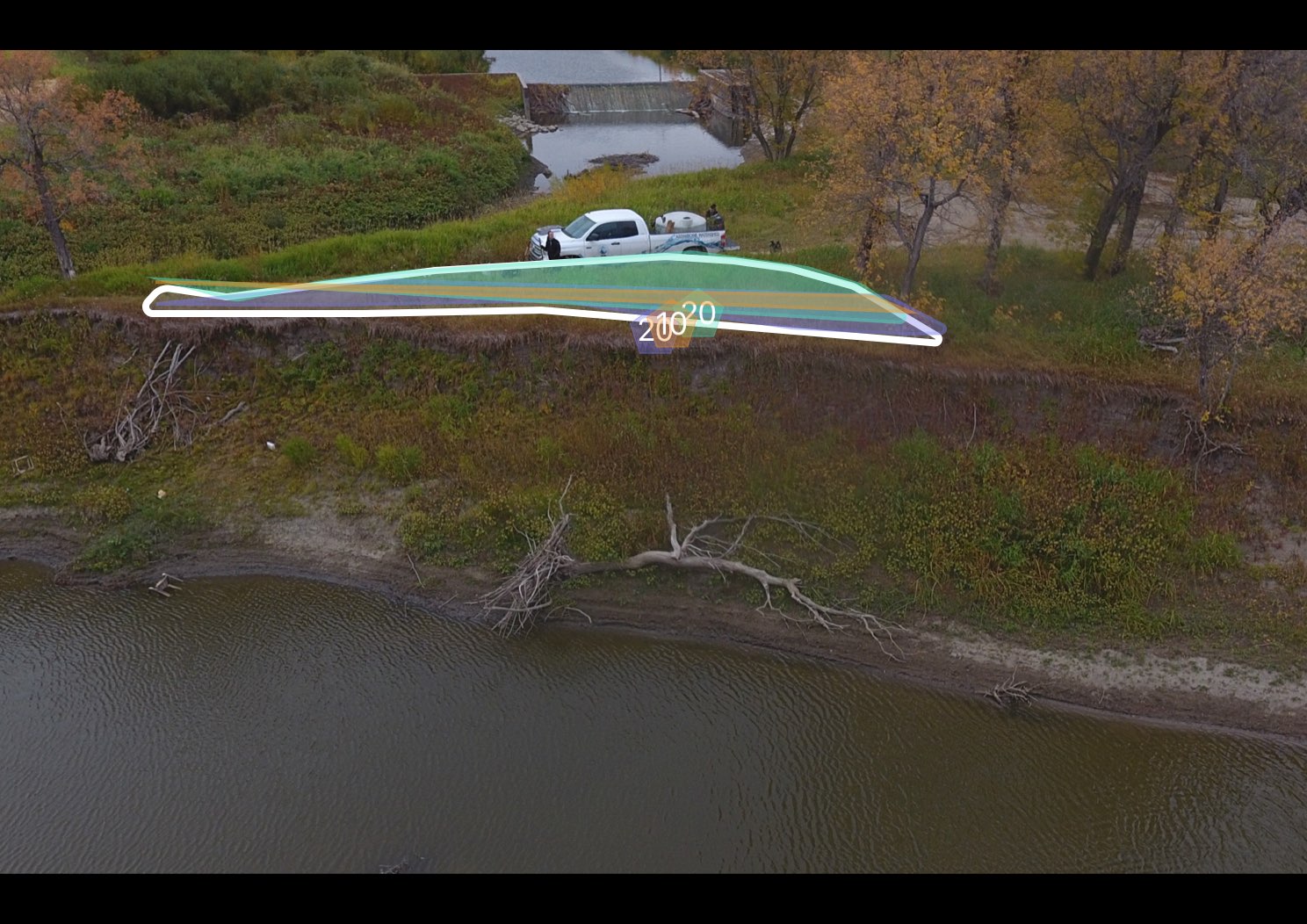
Schedule B
Financial Summary
Project by: Assiniboine Watershed Stewardship Association
Schedule C
Project Agreement
Stewardship Agreement
Please indicate your agreement to this proposed plan by signing the following Stewardship Agreement and submitting it, along with your financial contribution, to:
Assiniboine Watershed Stewardship Association
Assiniboine Watershed Stewardship Association
29 2nd Ave North
Yorkton, Saskatchewan
S3N 1G1
Plant Availability
Please note that plant species may need to be changed based on plant stock availability at the time of ordering.
Project Completion
The Natural Edge Stewardship Agreement with Assiniboine Watershed Stewardship Association
Agreement made this Day of the Month of in the Year .
BETWEEN Town of Kamsack Town of Kamsack “The Forks” Saskatchewan S0A 1S0 (Hereinafter called the OWNERS)
AND Assiniboine Watershed Stewardship Association Assiniboine Watershed Stewardship Association 29 2nd Ave North Yorkton, Saskatchewan S3N 1G1 (Hereinafter called WC)
WHEREAS the Owners and WC have met and discussed plans for shoreline naturalization on the specified area(s) in Schedule A existing on the Owners’ land;
WHEREAS the Owners indicate approval of the project as proposed; and
WHEREAS the project is, or will be for the benefit of the Owners and others;
NOW THEREFORE THE PARTIES AGREE AS FOLLOWS:
IN WITNESS WHEREOF the parties have agreed to the contents of this plan; SIGNED:
About this program
About Assiniboine Watershed Stewardship Association
The Assiniboine Watershed Stewardship Association (AWSA) is an independent, non-profit organization that is dedicated to protecting and enhancing source water in the Assiniboine River Watershed. Our vision is citizens and communities of the Assiniboine River Watershed working together to protect the source waters of the Assiniboine River; its tributaries and aquifers within the watershed. Our mission is to have healthy source waters throughout the Assiniboine River Watershed.
This program was created by Watersheds Canada
We believe that every person has the right to access clean and healthy lakes and rivers in Canada. At Watersheds Canada, we work to keep these precious places naturally clean and healthy for people and wildlife to continue using for years to come. We love working with others to meet the needs of local communities, whether you’re a concerned citizen, a landowner, a lake association looking for help, or a coalition of groups interested in activating your local community.

